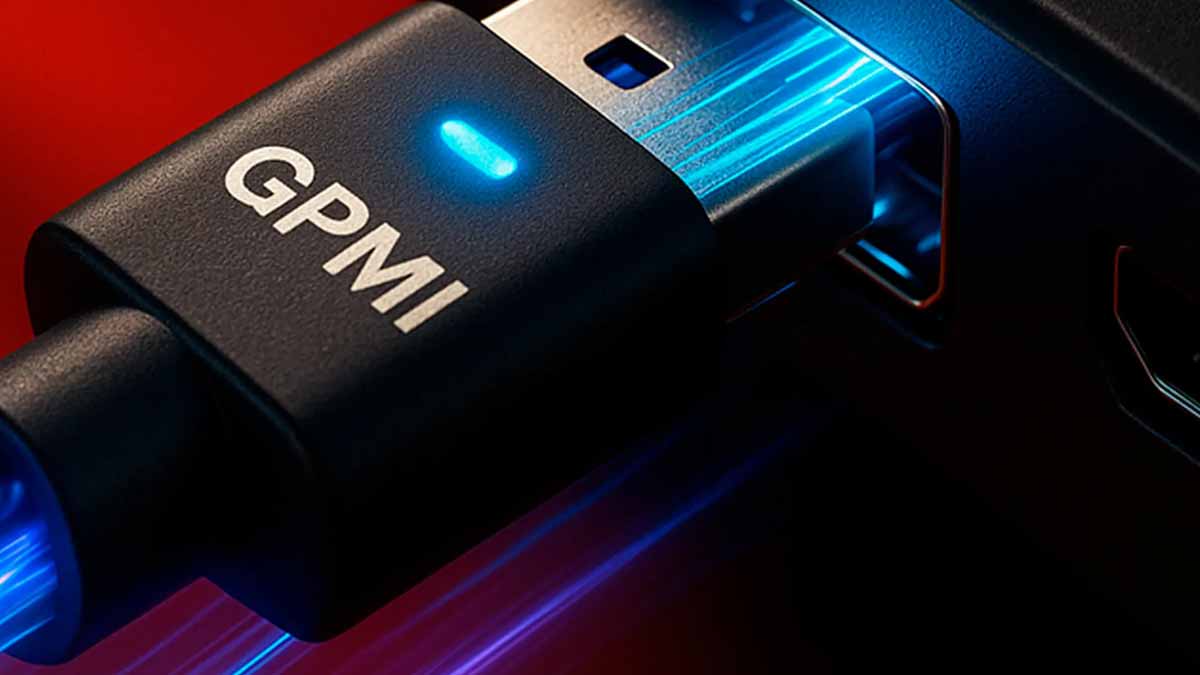A new cable standard steps into the spotlight with bold ambition and a clear mission. Born from a powerful Chinese alliance, it targets sharper screens, faster transfers, and fewer cords. The promise is simple: more bandwidth, more power, less hassle. In this race, HDMI finally meets a rival built for tomorrow’s displays without clinging to yesterday’s limits, and it points to smoother setups that feel fast, quiet, and truly reliable.
Beyond HDMI: what China’s alliance is building
GPMI arrives from the Shenzhen 8K UHD Video Industry Cooperation Alliance, a coalition of more than 50 Chinese tech companies. The mission targets a homegrown standard that handles video, data, and power in one link. It focuses on 8K at 7,680 by 4,320 pixels while trimming cable clutter for users.
Positioned as a general-purpose media interface, GPMI pushes very high throughput and serious power delivery in the same connector. That mix addresses everyday pain points, since bulky adapters slow setups and limit flexibility. With one cable, displays, peripherals, and charging can work together smoothly without juggling multiple standards today, everywhere.
The pitch challenges familiar habits anchored to HDMI and DisplayPort. Instead of matching today’s limits, the group sets a ceiling far above current baselines. That strategy aims to future-proof living rooms, studios, and offices while encouraging device makers to adopt a single, scalable pathway for screens, storage, and energy needs.
How the new interface works across video, data, and power
GPMI treats bandwidth and watts as equal citizens. The design streams uncompressed visuals while moving files and feeding energy. That integration reduces hubs, saves ports, and simplifies desks. It looks beyond single-purpose links, so a monitor can power a laptop, a dock can move footage while keeping temps in check.
Two profiles support different needs. Type-B targets maximum headroom for performance machines and studio displays. Type-C favors compatibility through a USB-C plug and balanced power. Both carry clean 8K images and robust data lanes, which means fewer compromises during editing, gaming, or live production when bandwidth spikes without warning today.
The alliance compares GPMI against leading options in market conversations. The roadmap positions it past DisplayPort 2.1 and HDMI 2.1 on throughput while challenging Thunderbolt 4 and USB4 on versatility. That stance sets expectations high because buyers now evaluate ports as platforms, not just sockets, so performance, reliability, and ecosystem support all matter.
Practical gains, real risks, and how to plan deployments
Users can expect cleaner setups, faster transfers, and fewer chargers. A single cable feeds displays and laptops while moving files quickly. Studios benefit because cameras, recorders, and color panels can share one backbone. Gamers gain headroom for 8K assets without harsh compression that affects latency, clarity, or stability during action.
Transition risk exists because ecosystems mature in phases. Early devices may limit features or hide settings, which frustrates teams. Clear labeling and certification will matter, as will cable quality and length. Backup paths remain useful, so keeping HDMI and USB-C adapters helps production avoid downtime during shoots, streams, or meetings.
Teams should plan rollouts with pilots. Map use cases, confirm compatibility, and note firmware needs. Track throughput and thermals under sustained loads, since short tests hide throttling. Schedule training for editors, streamers, and IT so habits change smoothly. When standards overlap, publish quick guides to reduce guesswork and speed adoption.
Inside the connectors: why Type-B and USB-C outgrow HDMI habits
Type-B chases absolute performance with headline numbers. The spec reaches up to 192 Gbps, leaving plenty of room for uncompressed streams and demanding workflows. Power delivery climbs to 480 watts, enabling monitors, docks, or workstations to run and charge together. That capacity reduces bricks, clears floors, and lightens travel kits.
Type-C trades some speed for broad compatibility. It tops out near 96 Gbps and supplies up to 240 watts, a balance that still covers 8K pipelines comfortably. The USB-C plug fits existing devices and accessories, so early adoption looks simpler. Users can bridge old and new gear while avoiding chains.
There is also a connector story. Type-B uses a unique plug that signals a clean break from earlier shapes. Type-C aligns with familiar USB-C hardware and ecosystem practices. That blend lets the alliance court enthusiasts who want maximum headroom and mainstream buyers who prefer convenience, without splitting the standard’s identity.
From domestic rollout to worldwide ripple effects and choices
Backers include more than 50 firms aligned inside Shenzhen’s 8K alliance. The project reflects a broader push for tech self-reliance. Domestic adoption likely comes first through TVs, laptops, docks, and cameras. If major manufacturers favor GPMI by default, the standard can scale rapidly across categories before buyers even see branding.
Export momentum depends on partner ecosystems. USB-C compatibility eases integration and suggests alignment with USB-IF expectations, which supports accessories and firmware updates. Retailers then face simple decisions, since cables that power and connect also reduce returns. Certification, logo clarity, and labeling anchor trust, so shoppers feel safe upgrading without confusion.
Competition remains intense because entrenched solutions work well. Vendors consider costs, royalties, and roadmaps before retooling factories. Developers want stable drivers and predictable behavior across systems. Clear migration guides, broad testing pools, and transparent governance help convert skeptics. If those signals land, GPMI could become a default choice across segments.
What matters now for your next display and devices
GPMI signals a confident shift in how screens, storage, and power can travel together. Numbers like 192 Gbps and 480 watts set new ceilings, while USB-C alignment lowers frictions that stall adoption. Markets still decide standards, yet momentum already builds at home. As devices ship, HDMI will share space with a contender designed for tomorrow, so buyers should watch compatibility lists, plan staged upgrades, and evaluate certification labels carefully too.
